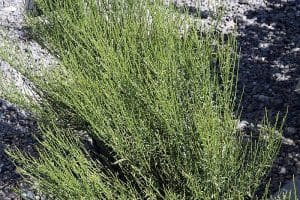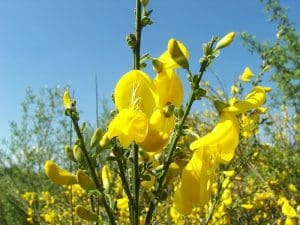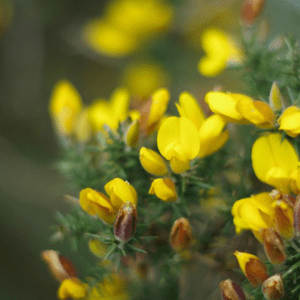Broom /Spring / Summer/ Flowers, Buds and Seeds Edible, other parts Toxic
Broom is the less aggressive little brother to gorse, the two look similar and both have some nice edible and medicinal parts.
Scientific name
Cytius scoparius/Sarothamnus scoparius
Family
Leguminosae/Fabaceae (Pea)
Habitat
Habitat: Prefers sandy, dry acid soils. Roadsides, heaths, railway embankments, river banks – generally dry, sunny places. Will tolerate very acid soils as long as they are well drained. It is a good indicator of soil type as almost never grows on chalk or limestone.
Distribution:
Grows throughout most of the UK with the exception of a broad band from the Wash to East Devon, where it is absent or uncommon. Also absent in North and North West highlands of Scotland.
Physical Characteristics for Broom
An upright, deciduous shrub that can reach over 2m tall.
Stems & Leaves
It has many straight, hairless, thin, green, five-angled stems that have small, long stalked leaves with 1 – 3 leaflets, but these leaves quickly fall off. Upper leaves are simple and shorter stalked.

Photo by David J. Stang, CC BY-SA 4.0 <https://creativecommons.org/licenses/by-sa/4.0>, via Wikimedia Commons
Flowers
Flowers are golden yellow, up to 20mm long on stalks up to 10mm long.

Willow, CC BY-SA 3.0 <https://creativecommons.org/licenses/by-sa/3.0>, via Wikimedia Commons
Uses
Only the flower buds, flowers and seeds are edible. The flower buds are picked just before they turn yellow and taste of peas. The buds were once commonly pickled in place of capers:
The tops were mixed with hops for brewing beer. The buds can be used in salads and the flowers as a garnish. Flowers can be used to make wine. The toasted seeds are a coffee substitute
Herbal properties
A bitter, narcotic herb that depresses respiration, regulates heart action and has diuretic and purgative effects. For use by qualified practitioners only.
Known Hazards
Contains alkaloids, notably sparteine which effects respiration and heart function. Should not be given to pregnant women or people with high blood pressure.
Potential lookalikes
Gorse (Ulex spp) is closely related to Broom and the two are often confused with each other.
Gorse has prickly spines.

The Laburnum Tree, Laburnum anagyroides, also has yellow flowers but these hang down in long pendulous racemes. The Laburnum Tree is tree like in form with a trunk and branches with leaves, rather than shrublike.
Ecology
It is a hermaphrodite plant but not self-fertilising. It is pollinated by bees.
Folklore
In England it was considered that, if the Broom had plenty of flowers it was a sign of a plentiful harvest.
It was given the name Broom because its branches were tied together to make besom brooms.
There was also some association between Broom and death in the month of May:
“If you sweep the house with Broom in May
You’ll sweep the head of the house away”.
References
https://www.rhs.org.uk/plants/5254/cytisus-scoparius/details
Leave a Reply
You must be logged in to post a comment.






3 replies on “Broom (Cytius scoparius) Identification Guide”